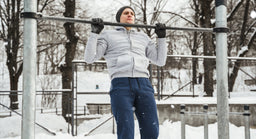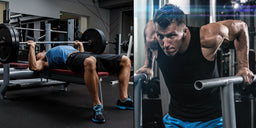
Parallel Bars vs Parallettes – Which Is Better?
The benefits of parallettes for home gym training
When you first start bodyweight training – especially in a home gym or garage gym – you will naturally think about the best bits of kit to buy.
The question of parallettes vs parallel bars will come up pretty quickly. They are both associated with bodyweight and calisthenics exercises, and are ideal for a home gym.
So which is best – parallel bars or parallettes? To help you decide, here are the pros and cons (plus some essential questions to ask yourself).
#1 What exercises can you do?
This is important. Some exercises need parallettes, and many bodyweight exercises actually need parallettes. Parallel bars are more useful for things like dips and leg raises. If you want to work on push ups, handstands and handstand push ups, planches, and balances then parallettes are a must. So the question is, do you want to work on basic strength moves like you would in a commercial gym, or do you want to master distinctive calisthenics style exercises? If it’s the latter, then you need a good set of parallettes.
#2 What is your focus?
Do you class yourself as a bodybuilder, training for hypertrophy? Or are you more of a calisthenics, full body type exerciser? Parallettes are a must if you want to get better at controlling your own bodyweight. Parallel bars can be a bit helpful for this, but really they are better for strength moves like dips.
#3 How much space do you have?
One of the amazing things about parallettes is how little space they take up. They are such a versatile bit of kit – and you can do so much with them – yet they barely take up any room. And you can take them with you when you travel. A huge plus!
Parallel Bars vs Parallettes – Which Is Better?
We love parallettes for home gym training, especially if you want to work on planches, L-sits, handstand push ups, and all those other cool and incredible bodyweight strength moves.
Parallels can help you avoid wrist pain (a common complaint with bodyweight training). Using parallettes puts your wrists in more of a neutral position, removing some of the strain and helping you avoid wrist injury.
They are adjustable, whilst parallel bars are stuck in width position. You can adjust the width of parallettes exactly as and when you need to.
Parallels can actually help you build strength and get more of a mind/muscle connection. Squeezing your parallettes whilst you do any exercise creates more tension in your arms, shoulders, chest, and back – great for strength, grip, core activation, and more.
You’ll naturally have more clearance off the ground with parallettes. That bit of extra elevation makes it easier to learn planche, L-sit, and handstands. Why struggle for months (or give up completely) when you can use parallettes to take you from beginner to competent!
















